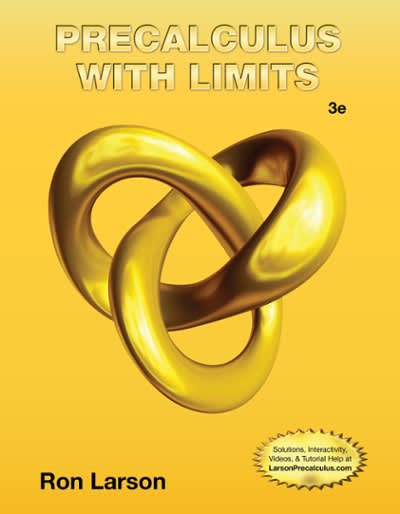




\fEXERCISE 4.36. In Example 4.20, use Eq. 4.16 to verify that the fake spheres with a = 2 and a = , have no umbilical points. (4.16) T. EXAMPLE 4.20 (Fake Spheres). We wish to construct surfaces of revolution with constant Gaussian curvature equal to 1. If K = 1, then Eq. 4.15 says that x" = -x. The following is a solution for every a > 0: (4.17) x(t) = a cos(t). The hypothesis that y is parametrizationgth, so (x')2 + (2')2 = 1, means that z is determined by x as follows: (4.18) = (t) = VI - x'(s)2 ds = 1 - a2 sin? (s) ds. (4.15) K1. Consider the simple regression model: V/i = Po+ Piri +ui, for i = 1, ..., n, with E(ur,) 7 0 and let z be a dummy instrumental variable for a, such that we can write: with E(uilz;) = 0 and E(vilzi) = 0. (c) Denote by no, the number of observations for which z =0 and by n, the number of observations for which z, = 1. Show that: (a - 2) = =(n-m). 1=1 and that: [(8 -=)(3: - 9) = 7 "(n - ni) (31 - 90) . where to and g are the sample means of y for z equal to 0 and 1 respectively. (Hint: Use the fact that n = nj + no, and that = = m). (d) Now we regress y on i to obtain an estimator of 81. From the standard formula of the slope estimator for an OLS regression and using the result in (c), show that: By1 - 90 I1 - To This estimator is called the Wald estimator.1. Consider the simple regression model: yi = Po+ Biz, + ui, for i = 1, ... . n. with E(uilx;) # 0 and let z be a dummy instrumental variable for z, such that we can write: Ti = no + 12+ vi, with E(uilz;) = 0 and E(vilz;) = 0. a) show that no = To, and #1 = 21 - 10, where ro and I, are the sample means of a for 2 equal to 0 and 1 respectively. (b) Define: i; = Fo + (21 - 10) Zi, show that, I, - I = (1, - To) (2, - 2), where ? is the sample mean of z. solve both parts, econometrics\fAn individual has the following preferences dened oyerconsumption of a composite good c [with a per unit price p normalized to 1] and leisure h a D measured in hours: U = h "1 f 3 c" 2;" 3. Hertotal daily time constraint is H = 24 = h + l hours {where I a I] denotes her labor supply in hours] and her daily non-labor income is y ' = 8 480. Answer each of the following questions based on the above information. You have three attempts {your highest score will be recorded]. Round your FINAL numerical answers to the nearest 2nd decimal place [0.61]. {31: Assuming the hourly wage is w = S 5, calculate this individual's daily consumption of leisure, h. 02: Again, assuming the houdy wage is w = $ 5, calculate her daily consumption ofthe composite good, c. [33: Assuming the hourly wage isw = S 15, calculate this in dividual's daily consumption of leisure, h. DA: Again assuming the hourly wage is w = S 15, calculate this individual's daily consumption of the composite good c . DE: Calculate the threshold level ofthe wage, above which she would work [I :5 D} or {h a: H = 24]. D6: Is she happier when the going wage is lower {e.g., $5} or higher [e.g., 315}? Group of answer choices When the wage is higher. When the wage is lower. 1. The simple linear regression model Y, = Bo + Bir; +;, &; " N(0, 0'), i = 1, ..., n, can also be written as a general linear model Y = XB+E, where Y = (Y1, . . ., Yn), E = (61, . . . .E.)? ~ Na. (0, 621), B = (Bo, Bi) and T2 X = In In this problem, we will show that the least squares estimate B = (XTX)-1XTY derived from multiple linear regression coincides with the least squares estimates from simple linear regression. (a) Using straightforward matrix multiplication, show that XX= (ni _mix ) =n( x Smo+2) XTY = _ _X ) =(SxY + niY (b) Using the identity ( " * ) d ad - bc -c a for a 2 x 2 matrix, show that Sxx + 12 (x X)= -I SXX -T 1


















